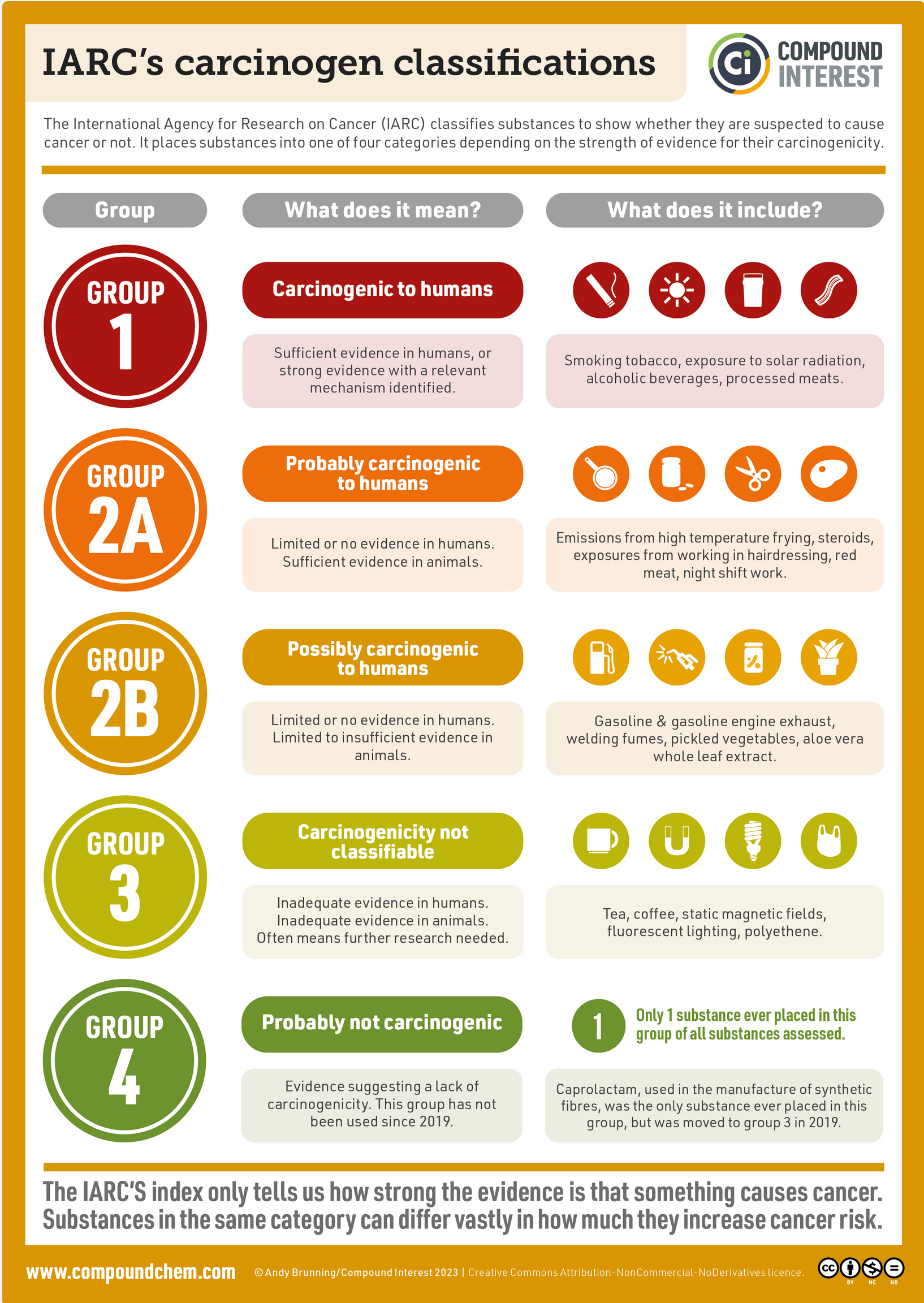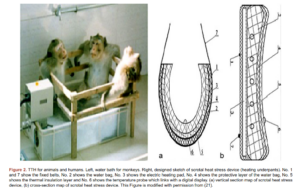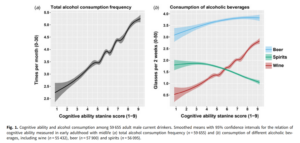Recently, the popular artificial sweetener aspartame was put on a list of “possibly carcinogenic” chemicals. This is a rather low category:

So naturally we might wonder what the truth is. There’s various ways to figure out if something causes cancer (recall, everything causes cancer according to Science™):
- Randomized controlled trials: assign some people or more likely, animals, to consume chemical X and see whether they get more cancer type Y
- Epidemiology studies: look at whether real humans who consume more of chemical X get more of Y type of cancer
- Chemical lab studies with cells: look for whether they induce strand breaks, or cause mutations etc.
I am going to ignore (3) because that line of evidence is notoriously unreliable. Let’s begin with (2), which are usually the way people get concerned. There is a review of human studies looking at aspartame and cancer:
- Haighton, L., Roberts, A., Jonaitis, T., & Lynch, B. (2019). Evaluation of aspartame cancer epidemiology studies based on quality appraisal criteria. Regulatory Toxicology and Pharmacology, 103, 352-362.
Given the widespread use of the low-calorie sweetener aspartame over the last 30 years, the current work was undertaken to evaluate aspartame epidemiology studies looking at cancer endpoints against quality appraisal criteria. The quality appraisal tool used was from the National Heart, Lung and Blood Institute (NHLBI) of the National Institute of Health. Studies identified included nine case-control studies and five prospective cohort studies. Most studies assessed low-calorie or diet beverages rather than aspartame intake specifically; however, common use of aspartame in diet sodas does allow for some general extrapolation of results. Following consideration of study quality, two case-control and five prospective studies were considered to meet the majority of the NHLBI criteria. The primary limitation of the other case-control studies was an inadequate sample size. Overall, the results of the studies do not support that exposures to low and no-calorie sweeteners and beverages, and by extension aspartame, are associated with an increased risk of cancer in humans.
So there are just 9 case-control studies and 5 cohort studies. In case-control studies, you begin with a sample of people who have the hypothesized kind of cancer, find some “matched controls” (similarly aged people of similar education level etc.) and see if the cases consumed more of X. In cohort studies, you begin the other way around, that is, with a big sample of regular people, then you monitor their consumption of X and see if they are more likely to get Y. For rare outcomes — such as a particular kind of cancer — cohort studies are often too imprecise unless they are very large. Case-control studies can have high power, but if the cancer type is rare, even this will be quite imprecise. Imprecise studies can only identify a cause if it is strong. If it’s weak, the noise will be larger than the signal and nothing will be found.
As can be read above, the human epidemiological studies of both types were too small to rule out that aspartame or other artificial sweeteners cause cancer to a small extent. But they are large enough to rule out any obvious, large causation. Here’s one of the larger studies in the review:
Gallus et al. (2007) reported the results from an integrated network of case-control studies in patients with various cancers which investigated the potential role of L&NC sweeteners. The study, which was conducted with patients in Italy between 1991 and 2004, included patients with the fol- lowing cancers: oral cavity/pharynx (n = 598), larynx (n = 460), eso- phagus (n = 304), colon (n = 1225), rectum (n = 728), breast (n = 2569), ovary (n = 1031), prostate (n = 1294), and kidney/renal cell carcinoma (n = 767). The controls were patients from the same hospitals that had non- neoplastic conditions such as traumas, orthopedic problems, and acute surgical disorders (n = 7028; 3301 men and 3727 women, of which 4838 were in more than one study). Details of the selection process, particularly of the cases were not clearly stated. Subjects were interviewed during their hospital admission, using a food frequency questionnaire, about their weekly consumption of sugar (as teaspoons), or saccharin, and “other” sweeteners (as sachets or tablets) over the previous 2 years. The researchers noted that the other sweeteners were “mainly aspartame”. It is noted that information on diet soft drinks consumption was not collected, although the authors stated that the use of such products was recent in Italy. Data were analyzed for saccharin, other sweeteners, and all sweeteners. The ORs and 95% CIs were determined using unconditional multiple logistic regression adjusting for age, sex, study center, education, body mass index (BMI), energy intake, and lifestyle factors (alcohol, smoking, hot beverage con- sumption). Aspartame was grouped with the “other sweeteners” for which the number of cases and controls that consumed greater than 0 sachets or tablets/day was a much smaller subset: oral cavity/pharynx (12 cases; 86 controls; OR 0.77, CI 0.39–1.53), larynx (21 cases; 55 controls; OR 1.62, CI 0.84–3.14), esophagus (10 cases; 40 controls; OR 0.77, CI 0.34–1.75), colon (88 cases; 327 controls; OR 0.90, CI 0.70–1.16), rectum (39 cases; 327 controls; OR 0.71, CI 0.50–1.02), breast (219 cases; 270 controls; OR 0.80, CI 0.65–0.97), ovary (73 cases; 236 controls; OR 0.75, CI 0.56–1.00), prostate (77 cases: 68 controls; OR 1.23, CI 0.86–1.76), kidney/renal cell carcinoma (57 cases; 109 control; OR 1.03, CI 0.73–1.46). The results of the study do not support an association between an increased risk of any of the cancers with consumption of saccharin or other sweeteners, noted to be mainly aspartame, as sachets or tablets.
It basically found no association no matter which kind of cancer was studied. The confidence intervals tell us the precision. So if we think it might cause cancer in the colon (a plausible location), the results are “OR 0.90, CI 0.70–1.16”, that is, the odds for getting colon cancer were a bit lower for people who consumed more aspartame, but it wasn’t different from chance. The effect of aspartame have about 95% probability of being somewhere from moderately protective (OR 0.70) to mildly harmful (OR 1.16). For small outcomes, odds ratios (ORs) are about the same as relative rates (RRs), so you can treat them roughly as percentages. As such, cancer risk was somewhere between 30% lower and 16% higher. Nothing to be scared of in other words.
Of course, the problem with such studies is that even if a link is found, it might be due to some kind of confounding. Which is to say, maybe people who eat aspartame also eat a lot of sushi, and sushi causes cancer in the colon. I made it up, but you get the idea. As far as I can see, only one study reported one subgroup analysis where men who drink diet soda were 80% more likely to get pancreatic cancer, and the p-value for this was close to 0.05, so it’s shrug tier evidence.
The human studies basically show no need to be worried. What about the randomized controlled trials? Well, no one has to my knowledge randomized humans into drinking diet or not for a number of years (this could be done with prison volunteers or in retirement homes), but there’s a few rodent studies (mice, rats). These are the studies:
- Soffritti, M., Belpoggi, F., Esposti, D. D., Lambertini, L., Tibaldi, E., & Rigano, A. (2006). First experimental demonstration of the multipotential carcinogenic effects of aspartame administered in the feed to Sprague-Dawley rats. Environmental Health Perspectives, 114(3), 379-385.
- Belpoggi, F., Soffritti, M., Padovani, M., Esposti, D. D., Lauriola, M., & Minardi, F. (2006). Results of long‐term carcinogenicity bioassay on Sprague‐Dawley rats exposed to aspartame administered in feed. Annals of the New York Academy of Sciences, 1076(1), 559-577.
- Soffritti, M., Belpoggi, F., Tibaldi, E., Esposti, D. D., & Lauriola, M. (2007). Life-span exposure to low doses of aspartame beginning during prenatal life increases cancer effects in rats. Environmental health perspectives, 115(9), 1293-1297.
- Soffritti, M., Belpoggi, F., Manservigi, M., Tibaldi, E., Lauriola, M., Falcioni, L., & Bua, L. (2010). Aspartame administered in feed, beginning prenatally through life span, induces cancers of the liver and lung in male Swiss mice. American Journal of Industrial Medicine, 53(12), 1197-1206.
There might be more but you get the idea. These studies are all conducted by the same Italian group, so if they are somehow messing things up or making up the results, the entire case for cancer would fall apart. What about p-hacking? I looked at some of the studies and they are full of p < .01 results, and the number of rats is quite large. Here’s a table from the first paper:

Why are they split by sex and why the poor statistical methods? I don’t know. Ideally, one would plug all of these into a regression model for maximum power, but this appears not to be done in any of the papers, and it doesn’t seem the data are public either, so we can’t reanalyze them. Nevertheless, we see the ##’s in many places, meaning p < .01 in some comparison. But frankly, the results are a little hard to square with the human results. If we look at the second table above, female rats, the cancer rate increases about 50% in a dose-response way, sampling error aside. This size of effect would have been found in the human studies if it generalized to humans. The fact that an effect is seen only for female rats but not male ones is also suspicious. Are we to interpret this as really, female rats are so specific in their poor aspartame metabolism that they get cancer, but the male ones don’t? And why is the focus on blood cancers? It would seem that liver, kidney, or intestine cancer is a more plausible place we would see the cancer. In the 2010 follow-up study, we get this plot:

It looks bad, until we realize that these are now the male mice getting cancer, because the females showed no increase (they weren’t plotted).
At this point, we might start getting suspicious that there is something wrong with the work from this lab. However, I found a document called “Evaluation of Ramazzini Institute Aspartame Studies – and EFSA’s Assessment“. This assures us that:

Which is to say, third party evaluators found the facility to be well-run, and it’s one of the best in the world. Maybe the diagnoses are bad? No, other researchers already tried this criticism, and when they were re-done by others, the same results were found. On the other hand, the results are peculiar with seemingly large, but untested, sex interactions that differ between studies. The authors are also quick to call for regulations. Not too surprising as their institute’s, a private non-profit, mission is to protect people from dangerous chemicals. On top of this is the implausibility of the effects. Why? We know how aspartame breaks down in the body, it’s on Wikipedia:
Aspartame is rapidly hydrolyzed in the small intestine by digestive enzymes which break aspartame down into methanol, phenylalanine, aspartic acid, and further metabolites, such as formaldehyde and formic acid.[10][48][49] Due to its rapid and complete metabolism, aspartame is not found in circulating blood, even following ingestion of high doses over 200 mg/kg.[10][48]
Aspartic acid
Aspartic acid (aspartate) is one of the most common amino acids in the typical diet. As with methanol and phenylalanine, intake of aspartic acid from aspartame is less than would be expected from other dietary sources.[10][48] At the 90th percentile of intake, aspartame provides only between 1% and 2% of the daily intake of aspartic acid.[10]
Methanol
The methanol produced by aspartame metabolism is unlikely to be a safety concern for several reasons. The amount of methanol produced from aspartame-sweetened foods and beverages is likely to be less than that from food sources already in diets.[10] With regard to formaldehyde, it is rapidly converted in the body, and the amounts of formaldehyde from the metabolism of aspartame are trivial when compared to the amounts produced routinely by the human body and from other foods and drugs.[10] At the highest expected human doses of consumption of aspartame, there are no increased blood levels of methanol or formic acid,[10] and ingesting aspartame at the 90th percentile of intake would produce 25 times less methanol than what would be considered toxic.[12]
In other words, it is metabolized into known chemicals and in very small doses, so that it is difficult to see how this could do much to cause cancer.
We can apply the well-known guiding principles, called the Bradford Hill criteria, for getting at causality given the entirety of the evidence:
- Strength (effect size): A small association does not mean that there is not a causal effect, though the larger the association, the more likely that it is causal.
- Consistency (reproducibility): Consistent findings observed by different persons in different places with different samples strengthens the likelihood of an effect.
- Specificity: Causation is likely if there is a very specific population at a specific site and disease with no other likely explanation. The more specific an association between a factor and an effect is, the bigger the probability of a causal relationship.[1]
- Temporality: The effect has to occur after the cause (and if there is an expected delay between the cause and expected effect, then the effect must occur after that delay).
- Biological gradient (dose–response relationship): Greater exposure should generally lead to greater incidence of the effect. However, in some cases, the mere presence of the factor can trigger the effect. In other cases, an inverse proportion is observed: greater exposure leads to lower incidence.[1]
- Plausibility: A plausible mechanism between cause and effect is helpful (but Hill noted that knowledge of the mechanism is limited by current knowledge).
- Coherence: Coherence between epidemiological and laboratory findings increases the likelihood of an effect. However, Hill noted that “lack of such [laboratory] evidence cannot nullify the epidemiological effect on associations”.
- Experiment: “Occasionally it is possible to appeal to experimental evidence”.
- Analogy: The use of analogies or similarities between the observed association and any other associations.
What is the effect size? Well, for some studies, rather large, say 50-100% increase in some cancers in rodents. But for the human studies, we see nothing that is remotely consistent with this. Of course, most people don’t drink a lot of diet soda, so their life-long dose would be rather small, and they would mostly contribute noise. But some people drink say 2 liters of diet soda every day for decades. If the effect is as strong as the rodent studies suggest, clearly, some of these cancers should have a large number of such persistent drinkers, but that is apparently not the case.
There is no consistency because no one else has apparently done these rodent studies somewhere else.
There is no specificity, as the kinds of cancer seem to change at random between the rodent studies. First it’s in the blood, then it’s the kidneys, then lungs. These don’t make a lot of sense to me. The comparison case is lung cancer from smoking. Smoking is very strongly associated with lung cancer, and for obvious mechanistic reasons, and not much associated with other cancers. That’s the kind of pattern we would expect unless we somehow think that aspartame increases the likelihood of all kinds of cancers despite being processed in the small intestines.
Dose-response curve? Yes, we do see these in the rodent studies, with some noise.
Plausibility? There isn’t any.
Coherence? There’s no coherence between the epidemiological, human studies and the rodent studies. Now, we could ad hoc hypothesize that humans are somehow immune to this problem, but why would that be? Artificial sweeteners are new, so humans haven’t evolved some protection against them. Possibly, some other quirk of human metabolism protects us, but which one? Also we don’t even care if rodents get cancer from aspartame if this is unrelated to human cancers.
Conclusions
Overall I don’t think there’s much need to worry about the recent reclassification as “possibly carcinogenic”. Clearly, science is being silly as usual. Aspartame is consumed in massive quantities worldwide. It is in every government’s interest to sponsor a large, pre-registered, open source study to end this debate. But why hasn’t this been done? It seems like this should have been done already decades ago.

